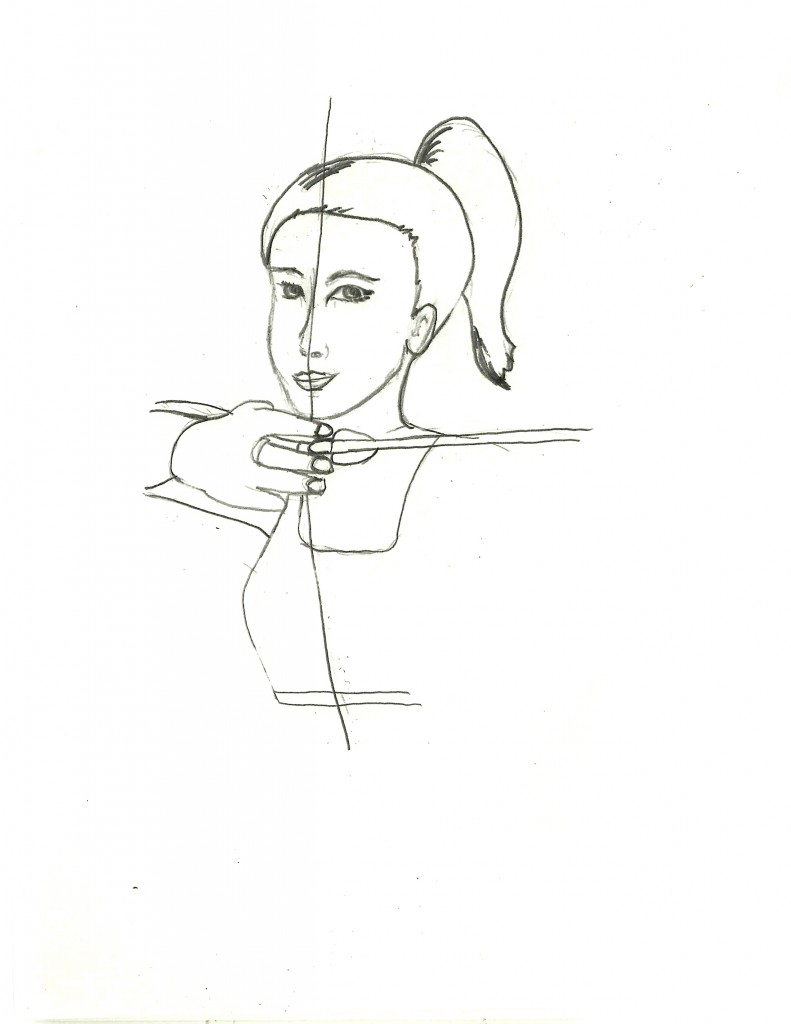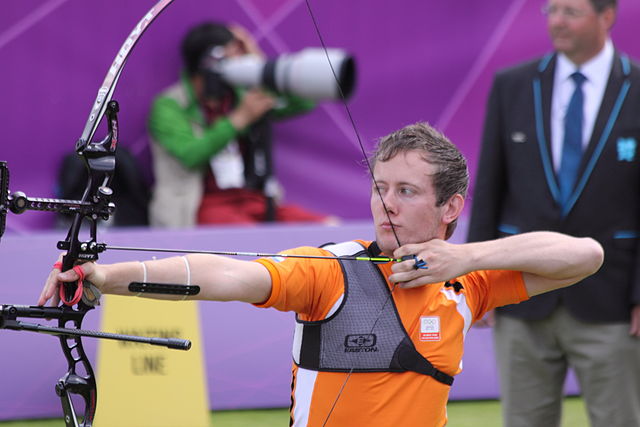Leave a Comment:
(12) comments
This is a cool website. There’s not enough archery in the world! I have only tried it a few times, but I really enjoy it. I always find the arrow just drops down. I think I need a few lessons. It looks a little scary to have it resting on your face. Is it dangerous?
ReplyHello Todd,
I agree with you that there is not enough archery in the world. 😉
If the arrow just drops down you might have nocked it in a wrong way.
When you follow all the steps of my training, it should already work better. Practice is important, too, of course.
Those anchors are not dangerous at all as long as you nock the arrow correctly and release it correctly.
The lesson after the next lesson will talk about how to release the arrow.
The arrow itself doesn’t touch your face, only the bowstring and sometimes the nock a bit.
Cheers
Moritz
ReplyI watched archery on the tv and thought it would be great to have a go but have never seen any training before.
What you say about the anchors seems so commonsense but I wouldn’t have even thought about the need to know these things.
I used to like air rifle target practice occasionally but this is banned here now so archery looks like a good way of trying out something similar.
How do I find out if there are any clubs or groups who do training around where I live, are there any association websites?
Hello Mark.
Archery and air rifle shooting are quite different.
If you haven’t already, please go through my whole archery training, so you don’t miss a vital step.
If you would like to try something that is more similar to air rifle shooting, I would consider trying a crossbow.
Read my crossbows for beginners guide and check out which crossbow I recommend for beginners.
I have quite many projects planned for my website.
One of them is a directory of archery clubs, but until then the best way to find one in your area would be to use google.
Just type your city or state + archery and you should find something.
Hope to see you around.
Let me know how it goes.
Moritz
ReplyHi Moritz,
Great article, I really enjoyed reading it!
I never tried archery in my whole life , I am a bit scared of this sport. It seems to be fun and I suppose you need to be seriously concentrated, which is a big problem for me 🙂
I have a question though. Isn’t it better to try first with plastic arrows?
Thank you very much for this awesome blog
Daniella
ReplyHello Daniella.
Archery is only dangerous if people don’t take care of their own and others safety.
I talk about this in my protective archery gear guide and safety guide.
Plastic is not really a good material for arrows.
They would be too light and break to easily.
There are safety points, though, that are soft to make them safer.
People who shoot with a bow have to be responsible and never underestimate their bow.
But I don’t think that people have to be scared of archery.
The chance of getting hurt is small, when the rules in my articles above are being followed.
Archery is a fantastic sport.
I hope you will try it one day.
Moritz
ReplyHello there,
I enjoyed your “how to draw a bow correctly” post and now this one is a lot of help as well. I think I am in the camp that prefers the side of the face anchor point and you are totally correct that practicing the same way every time will help to improve accuracy and also for when I need to make corrections. I will keep all of that in mind. How do you prefer to shoot?
Take care,
Anthony
Hey,
welcome back. 🙂
I have come to use the under chin anchor.
I tried both but the under chin anchor just felt better to me and now I stick to it of course.
So glad I could help you with my posts.
All the best.
Moritz
ReplyVery nice website, most of my friends here in Northern California are very much into hunting and fishing, some use crossbows. I am not sure if I am totally into the hunting part but there is a range in town that has archery I may be trying my hand with a couple friends,and from what I remember the last time I shot a bow, the sudden pain on the inside of my arm kind of hurt ( a lot ). I am sure this is caused by something I did wrong, and i’m sure the arm guard is not there for looks. Is there a common mistake that causes the bow string to glide along the arm ?. When I go out and try again I would like to not revisit that.
Thank you,
Paul
Hi Paul.
I think everybody who tries archery for the first time experiences those bruises. 😉
That’s why, just like you said, everybody should wear an arm guard.
With the right technique you can minimize the pain, though.
The thing that most beginners do wrong is, that they don’t rotate the arm out of harms way.
Depending on the bow, you can even avoid the bow string touching your arm completely.
I would still recommend to always wear an armguard, though.
Better save than sorry.
I hope you will try archery again.
It is such a great sport.
Let me know when you need any help.
Moritz
ReplyHi, Moritz,
I am 67, and have been learning on a youth bow for about a year, due to lack of strength drawing the bow. Just now have ordered a new bow (17 lbs.). Been practicing a lot, but very inconsistent. Just read/heard about anchors. It makes so much sense. Practicong in a few minutes. Can’t wait to go back and read all the things you have to say. I enjoyed your explanations of the anchors. I started out with a trigger release, but didn’t like it. Now using nothing, but fingers get so sore and blistered. I need to find something else. Thanks for the article.
Cathie
ReplyHallo Cathie,
thank you for your kind words.
I always recommend trying the different anchors and then decide which feels more natural to you.
Once you have found “your” anchor, stick to it.
Having an anchor will make your shooting much more consistent.
In archery, you have to try to always do exactly the same. It has to become a routine.
Take a look at my complete archery training here.
Or subscribe to my newsletter. I will send you my e-book then. It is a compact guide that explains everything you need to know about archery.
I also recommend shooting with your fingers and not with a trigger/mechanical release if you are still a beginner.
Using just your fingers will make sure that you don’t form bad habits that could come with a release.
I recommend getting a finger tab or a shooting glove.
Either of them will protect your fingers and you won’t have to deal with blisters.
But if you keep shooting without finger protection, your skin will harden and get calloused. Then you wouldn’t need a tab or glove anymore.
I am always wearing a glove or tab!
You don’t need to go through the pain and discomfort.
I hope you keep enjoying archery!
It is a fantastic sport.
If you have questions, don’t hesitate to ask me.
I’d love to help you.
Moritz
Reply


